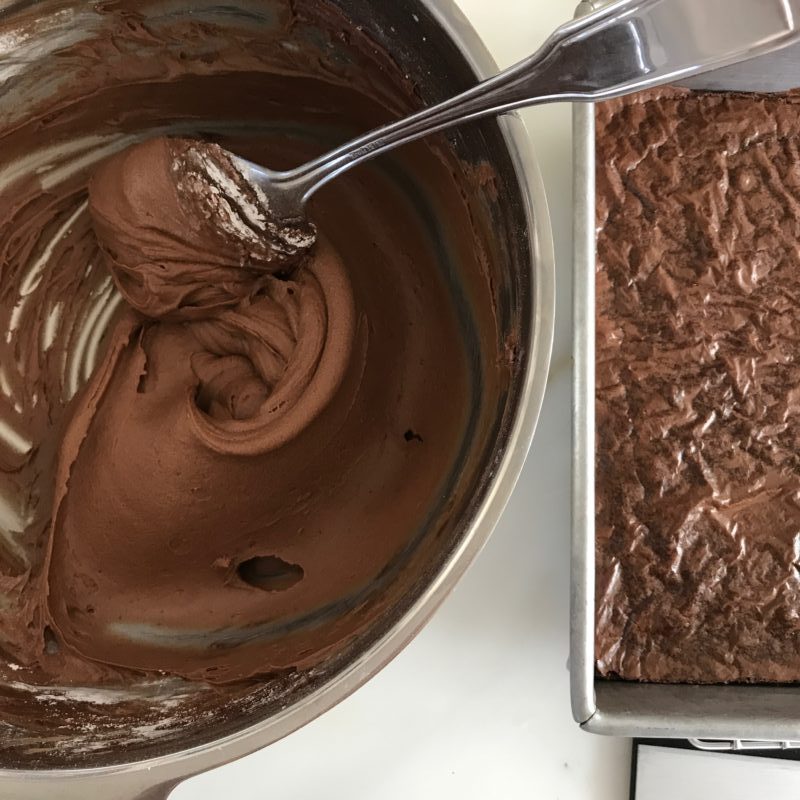Within this section of the blog, we will explore the science of baking brownies. Before tackling the brownie recipe and adaption, we must first examine the roles of each ingredient for Brownies. Below I have included a chart that explains the role of each ingredient:
Function Of Ingredients:
| butter |
|
| White sugar |
|
| eggs |
|
| Vanilla extract |
|
| All-purpose flour |
|
| salt |
|
| Baking powder |
|
| Unsweetened cocoa powder |
|
* For more information on the ingridents and how they tie together click on the following links
Background on Eggs/ Denaturation:
The beating of eggs is a way to denature the proteins that are within them. Denaturation is the alteration of a proteins’ natural structure by chemical or physical means. Proteins are long chains of amino acids, so when they are denatured they are unraveled. The previous bonds are then available to bond with other molecules. However, there is only a change in the structure of the protein not a change in composition. The original state of the protein resembles curled-up little balls, which have hydrophobic parts. As we know, eggs provide the gooey like texture because they contributing moisture and fat. As a result, the egg within the mixture will cook. That is because of protein coagulation, where the proteins will form and bond together. Below I have included a chart that displays the protein coagulation that occurs within an unmixed egg. However, since we are dealing with a mixed egg in the recipe, coagulation will occur between 144° F and 158° F (62.2° C and 70° C).
| 145ºF | egg white begins to thicken |
| 150ºF | egg white becomes a tender solid |
| 150ºF | yolk proteins begin to thicken |
| 158ºF | yolk sets |
| 165ºF | yolk and white mixed together sets |
| 180ºF | ovalbumin begins to thicken |
| 184ºF | ovalbumin sets |
*For more background on the science of eggs click on the following link*
Recipe Adjustment:
The original brownie recipe calls for the use of 2 eggs. An adjustment that I made was to change one of the 2 eggs to egg whites. I wanted to see how changing the components of an egg would affect the overall texture of the brownie. Brownies normally have a chewy and soft texture, so after completing this investigation I saw how much of a role eggs play when making brownies. By adding eggs whites to the batter the structure of the brownie changed from moist and chewy, to a cakey like texture. This occurred because egg whites make up 58% of the egg. An egg is mainly composed of 88% of water, 0.2% fat, and 11% of protein. The protein in egg whites is where all essential amino acids are found that are rearranged through denaturation and coagulation. Egg whites begin to solidify and cook faster due to forming at a lower temperature. This would cause brownies to form faster while letting moisture escape at a faster rate. So the number of egg whites present within the adapted recipe is greater than the original recipe, and therefore overpowers the number of protein provided from the one yolk to even out. According to Taste Of Home.com, “Egg whites add volume and act as a drying and leavening agent. Egg yolks provide fat, which adds flavor and tenderness, and protein… The yolk also acts as an emulsifier, helping to blend liquids, like oil and water, that are hard to combine.” Since the adaption is switching from two mixed eggs to one mixed egg and an egg white, there will be a loss of fat content. The loss of fat content will result in the brownie having a lighter, airier texture because of the decrease in fat. A good rule of thumb to remember when dealing with eggs is that more egg whites create a firmer consistency and more egg yolks create a creamier consistency. An adaption like this would be helpful for people who prefer cakey brownies, so this was a nice insight for that. Cakey brownies are thicker than the original brownies and have a lighter, airier texture due to a lower amount of fat.

